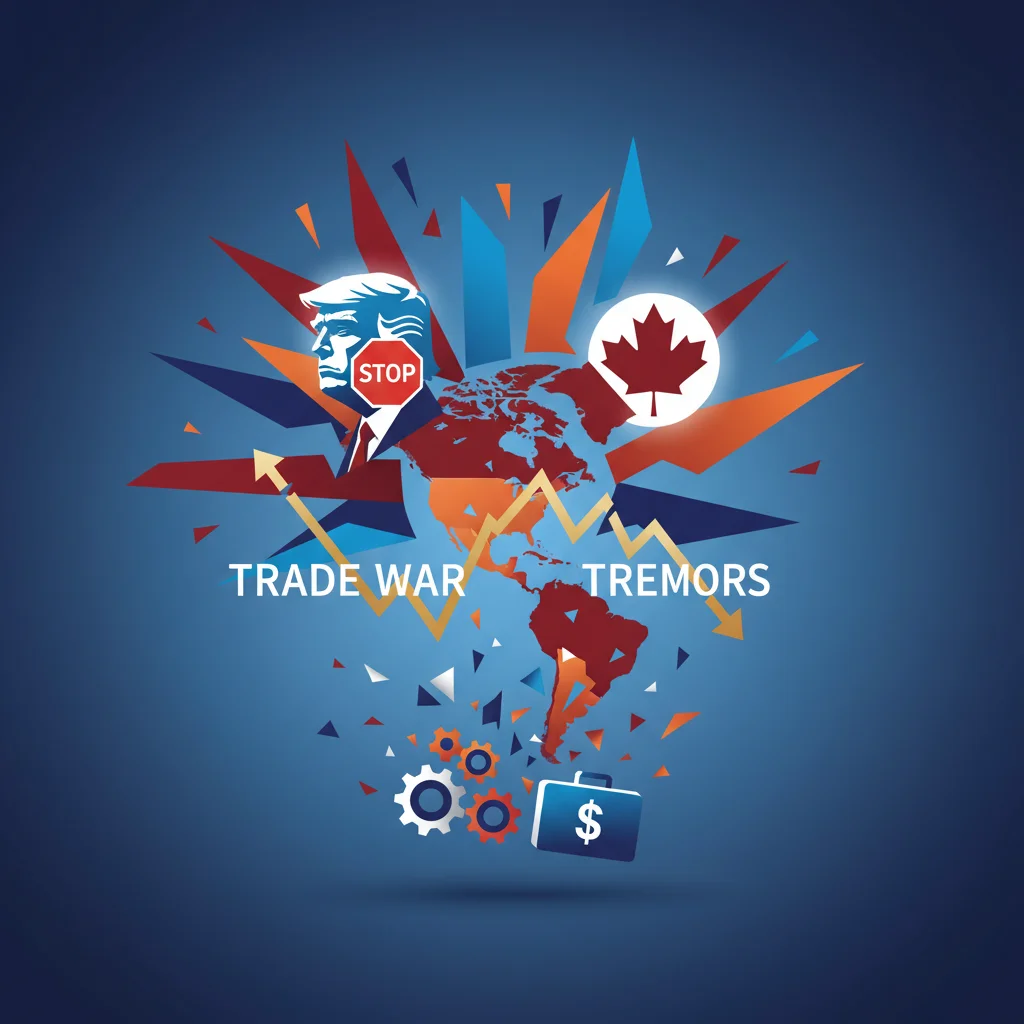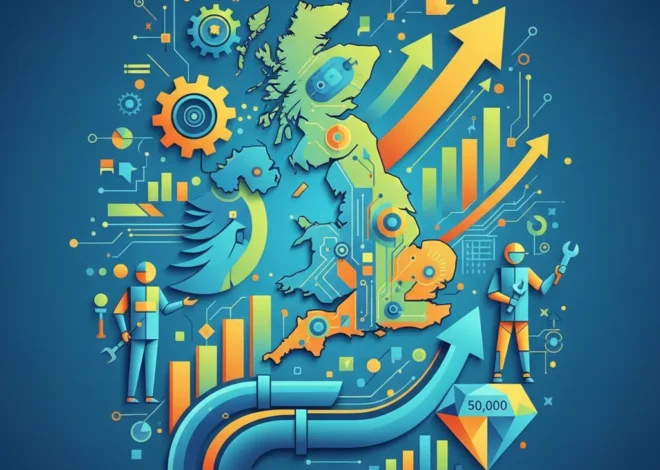
Trade War Tremors: Trump Halts Canada Talks—What It Means for the Economy and Your Portfolio
The Art of the Deal or a Deal-Breaker? Unpacking the Sudden Halt in US-Canada Trade Negotiations
In a move that sent immediate ripples through the global economy, the White House has abruptly declared an end to trade negotiations with Canada. The announcement, reportedly triggered by the US president’s frustration over an anti-tariff advertisement from the province of Ontario, injects a profound level of uncertainty into one of the world’s most significant trading relationships. According to a report from the Financial Times, this decision threatens to derail the painstaking efforts to modernize the North American Free Trade Agreement (NAFTA) into its successor, the United States-Mexico-Canada Agreement (USMCA).
For investors, business leaders, and anyone with a stake in the North American economy, this development is more than just a political headline. It’s a critical event that could reshape supply chains, impact corporate earnings, and introduce significant volatility into the stock market. This article will dissect the implications of this breakdown, explore the potential economic fallout, and offer an expert perspective on how to navigate the turbulent waters ahead.
A Relationship Built on Trillions: The Stakes of US-Canada Trade
To understand the gravity of the situation, one must first appreciate the sheer scale of the economic partnership between the United States and Canada. It is one of the largest and most comprehensive trading relationships in the world, with goods and services crossing the border at a staggering rate. In 2022 alone, the total trade between the two nations exceeded $900 billion, making Canada the largest trading partner for the United States.
This intricate economic web was woven over decades, largely under the framework of NAFTA, which eliminated most tariffs and facilitated seamless cross-border commerce. The renegotiation into USMCA was intended to update this agreement for the 21st century, addressing everything from digital trade to intellectual property. The current impasse jeopardizes not just a new deal, but the stability of the existing multi-trillion-dollar ecosystem.
Below is a snapshot of the key economic interdependencies that are now at risk:
| Sector | Key Integration & Economic Impact |
|---|---|
| Automotive | Highly integrated supply chains where parts and vehicles cross the border multiple times before final assembly. Tariffs could cripple production and raise consumer prices. |
| Energy | The U.S. is a primary destination for Canadian crude oil, and the two countries share a deeply connected energy grid. Trade disruptions could impact energy prices and security. |
| Agriculture | Massive bilateral trade in livestock, grains, and produce. Tariffs on key goods like Canadian dairy have been a major point of contention. |
| Finance & Banking | Canadian banks have a significant presence in the U.S. market. Economic instability in either country directly impacts the North American banking sector. |
This deep integration means that economic pain on one side of the border is inevitably felt on the other. A trade war isn’t a zero-sum game; it’s a scenario of mutually assured disruption.
The £3,000 Scoop: What an Ice Cream Shop's Bill Reveals About the UK Economy
From Bay Street to Wall Street: The Financial Market Fallout
Geopolitical shocks are a primary driver of market volatility, and the breakdown of trade talks is a textbook example. The immediate impact is felt across several key areas of finance and investing.
Currency Fluctuations and Forex Trading
The first casualty in a trade dispute is often the currency market. The Canadian Dollar (CAD) is likely to weaken against the US Dollar (USD) as investors price in the risk of economic damage from potential tariffs. For international businesses and forex traders, this creates both risk and opportunity. Companies with cross-border operations will need to hedge their currency exposure, while the volatility in the USD/CAD pair will attract significant attention from the trading community.
Stock Market Sectoral Impact
The broader stock market will react to the uncertainty, but specific sectors will bear the brunt of the impact. Companies in the automotive, manufacturing, agriculture, and materials (like steel and aluminum) sectors with heavy reliance on North American supply chains are particularly vulnerable. Investors should anticipate downward pressure on the stocks of these companies until a clear path forward emerges. Conversely, domestically-focused companies may prove more resilient.
The Economics of Uncertainty
From an economics perspective, this level of uncertainty is toxic for business investment. When companies cannot predict future tariff regimes or supply chain costs, they delay capital expenditures, hiring, and expansion plans. This can create a chilling effect on GDP growth. According to analysis from the Peterson Institute for International Economics on similar trade disputes, the downstream effects of tariffs often outweigh any perceived benefits by stifling investment and raising consumer prices.
China's Singles Day Kicks Off Early: A Strategic Lifeline for a Faltering Economy?
Navigating the New Normal: The Role of Financial Technology
In an era defined by instantaneous information and high-frequency market movements, technology plays a pivotal role in how businesses and investors respond to crises. The field of financial technology, or fintech, offers tools that can help manage the chaos.
- Algorithmic Trading: Sophisticated algorithms can execute trades in milliseconds based on news sentiment analysis, allowing institutional investors to react to breaking headlines far faster than a human could.
- Risk Management Platforms: Modern fintech platforms allow corporations to model the financial impact of different tariff scenarios on their supply chains, helping them make more informed contingency plans.
- Blockchain and Supply Chain Transparency: While still an emerging technology, the promise of blockchain is gaining attention in global trade. A distributed ledger could, in theory, provide an immutable and transparent record of a product’s journey through the supply chain. In a fractured trade environment, this could help verify the origin of goods and navigate complex customs regulations, though widespread adoption is still years away.
These technological advancements don’t eliminate the underlying risk, but they provide a more sophisticated toolkit for navigating it. The modern investor and business leader must be as fluent in technology as they are in economics.
What Comes Next? Scenarios for North American Trade
With negotiations at a standstill, the path forward is murky. There are three plausible scenarios that could unfold in the coming weeks and months:
- A Quick Reversal: The halt is a temporary negotiating ploy. After a period of public posturing, both sides return to the table, possibly with the U.S. having secured a minor concession it can frame as a victory. This is often the pattern in high-stakes political deal-making.
- A Protracted Stalemate: The breakdown is real, and talks remain frozen for an extended period. This would lead to a prolonged state of uncertainty, weighing heavily on business confidence and the stock market until a resolution is found.
- Escalation and Retaliation: The U.S. moves forward with imposing new tariffs, prompting Canada to retaliate with tariffs of its own. This is the full-blown trade war scenario, which would cause significant economic damage to both nations and have knock-on effects for the global economy.
For business leaders, now is the time to stress-test supply chains and evaluate dependencies. For investors, the key is to remain diversified and avoid knee-jerk reactions. Geopolitical events can cause sharp market swings, but they don’t always alter the long-term fundamentals of well-run companies.
Beyond the Headline: Why a Simple Chart Correction Unlocks the Real Story of Economic Uncertainty
Conclusion: A Test of Economic Resilience
The sudden halt in US-Canada trade talks is a stark reminder of the fragile intersection between politics and finance. What began as a negotiation to modernize a trade agreement has morphed into a high-stakes standoff with the potential for significant economic consequences. The stability of a nearly trillion-dollar trade relationship now hangs in the balance, a situation that demands close attention from anyone involved in the financial markets.
While the immediate future is uncertain, the core principles of sound investing and business strategy remain the same: prepare for volatility, understand your exposures, and focus on long-term value. The coming days will test the resilience of the North American economy and the nerve of investors worldwide.


